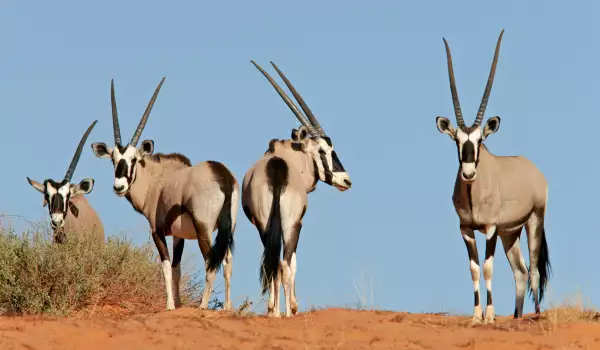Matobo National Park

One of the major tourist attractions Zimbabwe it is Matobo National Park. This is a monument of world heritage, where you can see more than 300 rock paintings left over the centuries among the incredibly beautiful natural landscapes and rock formations.
Some peaks such as Shumba, Shaba and Shumba Sham are considered sacred and locals believe that evenpointing to them with your hand would cause misery and bad luck .. Hidden in cracks in rock is the holy altar of the Ndebele in the rain, where people still pray to Mvali and offer prayers for rain.

Matobo it is also the only place in the world where you can see the black eagle. Residents of the park include black and white rhinoceros, antelopes, zebras and giraffes.
Within Matobo there are many fascinating rock formations. For maximum convenience of the tourists, the park has the location of each of them on maps, marked with accuracy.
In arrays of stone caves there are many sacred places that have preserved to this day works of the so-called rock art. These paintings are full of themes, plots and rich veins of imagery. Most of them are quite realistically presented drawings of dancing, jogging or hunting people, as well as minimalist rock reflections of animals, trees, birds and even insects that are found here.
Matobo is is known for the fact that this is the tomb of Cecil Rhodes. His body was laid in a solid entity named "world view". Under the legacy of Rhodes, it gives national park Matobo to the inhabitants of the city Bulawayo.
One of the attractions here is Tengenenge Farm. Visitors can walk around the spacious gardens, which contain about 17, 000 original sculptures. Rooms and food on the farm are relatively expensive, but there is the opportunity to stretch a tent and sleep outdoors.
Another interesting attraction for visitors here are the 39 snake species that occur in these places. The greatest horror and fear produces the highly poisonous mamba. The many snakes here are probably the reason for the large populations of rare falcons and eagles.
It is best to visit the park during the cool and dry period from April to August. From September to November the weather is hot and dry, and then the rains begin. The hills of the reserve have a comfortable and well maintained road (A 47), which is 32 km long, if you go in the southwest city of Bulawayo.















